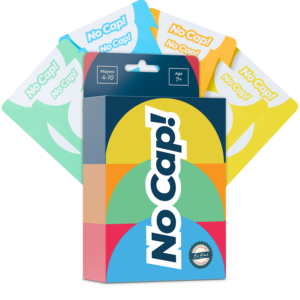We know you have a short attention span.
Here are some quick rules to get you playing.
We know you have a short attention span. Here are some quick rules to get you playing.
Setup
Playing
The Judge flips one punishment card face up.
Each player picks one card from their hand and submits it to the Judge face-down. You pick the card that you think deserves the punishment that is shown face up. The Judge flips the cards once everyone has submitted.
You have one goal: to convince the Judge and other players that the card you picked is the worst one on the table for whatever hilarious, annoying, or awful reason. You want to tailor your argument to the punishment on the table. Everyone gets a turn at making their “opening argument” as to why their card is the absolute worst. Once everyone has said their piece, bring the pandemonium. Challenge others’ cases, and enhance your own. What’s that saying? Oh yeah. When they go low, you go low too.
#winning
Once the Judge has heard enough, they decide which card is the worst of the worst. Whoever played that card wins the round. The Punishment card and the points go to the winner. Rinse and repeat with a new Judge every round.
The game ends when one player has racked up five points, or when the Punishment Deck runs out of cards.
So, you took your Ritalin today. We’ve got you covered.
Setup
Inside the game box, you’ll find two decks of cards. The Main Deck has hundreds of cards with names of celebrities, politicians, pop-culture references, and annoying types of people we all know. The Punishment Deck contains Punishment Cards which dole out punishments to “convicted” cards and points to the winner of each round.
Start by dealing each player five cards from the Main Deck. Don’t worry if you get a card you don’t like; players can replace one card from their hand with another card from the Main Deck at the start of each round. The Judge doesn’t replace; they’re not playing a card this round.
Stage the two decks and a Discard pile in the middle of the table, face-down. Any time a card is played or discarded, it ends up in the Discard pile. Just shuffle the Discard pile if you run out of cards in the Main Deck.
Arguments
Once everyone has their hand and has replaced a card (if they wanted to), Opening Arguments commence. Pick one name from your hand that you feel is probably worse than any card other players might submit—for whatever hilarious, annoying, or awful reasons—and submit it to the Judge face-down. (Remember, the Judge doesn’t play a card this round).
Start formulating your case for “conviction.” Go ahead, bring up the annoying songs, the terrible movies, or that scandal from five years ago. We haven’t forgotten. Hell, make sh*t up if you want.
The Judge reveals the “defendant” cards after every player has submitted. Each player then takes a turn explaining why they sent their card to “trial.” The Judge moderates however they see fit—deciding the order of arguments, imposing time limits, or just sitting back and watching the free-for-all.
Challenges
Now that everyone has stated their case, the Judge will hear challenges. Remember, you’re trying to get the Judge to pick your card over all the others as the worst of the worst. So, this is your chance to dispute other players’ cases and enhance your own.
Maybe Justin Bieber’s recent stuff is actually not that bad. Maybe Nicolas Cage just doesn’t get good movie scripts. Maybe that other player doesn’t have much room to talk. Does the Judge owe you money? Use it. Go there. If all else fails, you can always try a Bribe.
Legal Strategy Cards
You’ll notice some other cards sprinkled throughout the Main Deck and maybe in your hand. These are Strategy Cards. You’ll want to use them. Strategy Cards change court proceedings. They’re lucky draws within the Main Deck to use to your advantage (or others’ disadvantage).
You can get extra points, appeal a punishment, subpoena the deck, bribe the Judge, even force a “Jury” to make a deliberation. Find these cards and follow their instructions to spice up the game. They just might be your key to #winning.
#winning
Once the Judge has heard enough, they will decide which single card is the worst of the worst. Whoever played that card wins the round.
After a winner is chosen, the Judge flips the top card from the Punishment Deck. The card and the points go to the winning player. Some Strategy Cards impact the choice of winner or the Punishment Card awarded. Look out for those.
Once a winner has been chosen and a Punishment Card awarded, the round is over. Players pick from the Main Deck to bring their hand back to 5 cards. Then, rinse and repeat with a new Judge, clockwise or counterclockwise. The game ends when one player stacks up 5 points (or whatever limit your table chooses), or when the Punishment Deck runs out, or if someone can play the Whistleblower card.
The Judge

The Judge has the power in the Capital Punishment courtroom. As Judge, you can moderate discussion, cut people off, ask questions, investigate, play devil’s advocate—or not. Up to you. You have the ultimate responsibility: choosing winners and giving out points. We hope you’ll be unbiased, but we know you probably won’t be. Live your best afternoon broadcast-TV syndicated Judge fantasy.




